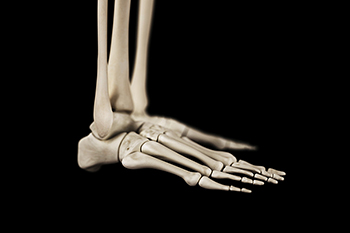
Foot bone anatomy is essential for understanding how the foot supports movement and balance. The foot is divided into three main sections, which are the hindfoot, midfoot, and forefoot. The hindfoot consists of the talus and calcaneus, or heel bone, which play a critical role in weight bearing and shock absorption during walking and running. The midfoot comprises five tarsal bones that provide flexibility and stability, allowing for efficient movement. The forefoot includes the metatarsals and phalanges, which are vital for balance and propulsion. Together, these sections work in harmony to absorb impact, support the body, and facilitate walking, running, and jumping. A strong understanding of foot bone anatomy helps in identifying potential issues and developing effective treatment strategies for foot-related problems. If you have developed a foot condition, it is suggested that you consult a podiatrist who can treat various foot problems.
If you have any concerns about your feet, contact David Carmack, DPM from Texas. Our doctor can provide the care you need to keep you pain-free and on your feet.
Biomechanics in Podiatry
Podiatric biomechanics is a particular sector of specialty podiatry with licensed practitioners who are trained to diagnose and treat conditions affecting the foot, ankle and lower leg. Biomechanics deals with the forces that act against the body, causing an interference with the biological structures. It focuses on the movement of the ankle, the foot and the forces that interact with them.
A History of Biomechanics
- Biomechanics dates back to the BC era in Egypt where evidence of professional foot care has been recorded.
- In 1974, biomechanics gained a higher profile from the studies of Merton Root, who claimed that by changing or controlling the forces between the ankle and the foot, corrections or conditions could be implemented to gain strength and coordination in the area.
Modern technological improvements are based on past theories and therapeutic processes that provide a better understanding of podiatric concepts for biomechanics. Computers can provide accurate information about the forces and patterns of the feet and lower legs.
Understanding biomechanics of the feet can help improve and eliminate pain, stopping further stress to the foot.
If you have any questions please feel free to contact our office located in Marble Falls, TX . We offer the newest diagnostic and treatment technologies for all your foot and ankle needs.
